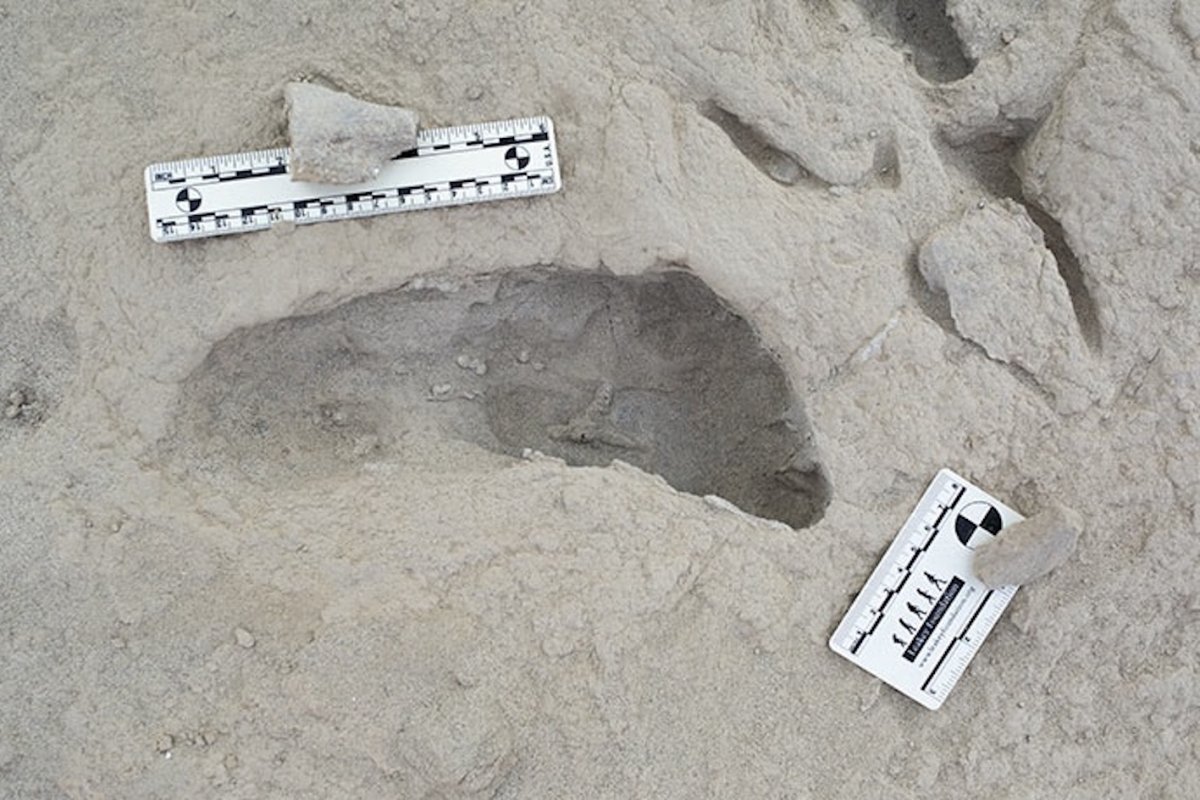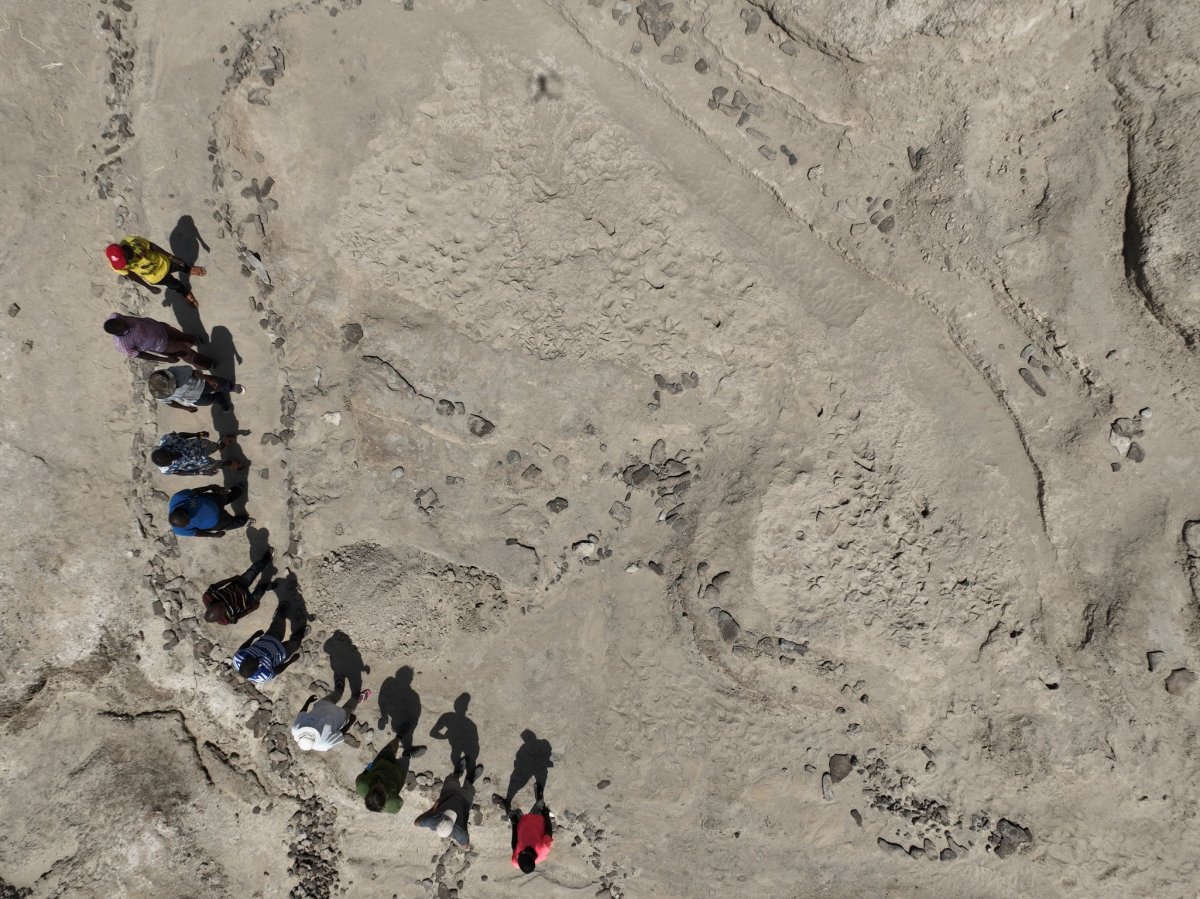In a first-of-its-kind discovery, a set of remarkable footprints found recently in East Africa has revealed that two species of extinct human ancestor crossed paths within hours of each other some 1.5 million years ago.
The footprints, uncovered in a lakeshore environment in northern Kenya’s Turkana Basin, represent strong physical evidence that multiple hominin species coexisted in the region. Previously, this had only been inferred from scattered fossil evidence.
(Hominins is a term used to refer to humans and their extinct relatives that emerged after the split from the last common ancestor with chimpanzees.)
“This [study] proves beyond any question that not only one, but two different hominins were walking on the same surface, literally within hours of each other,” paper author and geologist Craig Feibel of Rutgers University in New Jersey said in a statement.

“The idea that they lived contemporaneously may not be a surprise. But this is the first time demonstrating it. I think that’s really huge.”
For much of the Pliocene (5.3–1.8 million years ago) and Pleistocene (2.58 million to 11,700 years ago) epochs, multiple hominin species are thought to have coexisted in regions of eastern and southern Africa.
But due to the limitations of the fossil record, there is a gap in our understanding of how these hominins interacted with one another.
The latest study, published in the journal Science, provides the first evidence of Pleistocene hominins displaying different styles of bipedalism on the same footprint surface. Bipedalism is the ability to walk upright on two legs, a defining trait of hominins that distinguishes them from other primates.
The research team discovered the first of the fossilized footprints in 2021 and the surface containing them was then excavated the following year, revealing the full extent of the tracks.
The study authors determined that the tracks were likely made by Homo erectus and Paranthropus boisei—two extinct hominin species that once lived in the region. Analyses also revealed that the footprints were 1.5 million years old, and that the tracks had been made within hours of each other.
“Their presence on the same surface, made closely together in time, places the two species at the lake margin, using the same habitat,” Feibel said.

Both H. erectus and P. boisei are thought to have walked in an upright stance, like other hominins. The former species, considered to be a direct ancestor of modern humans, survived for more than a million years after the Turkana Basin footprints were made, but the latter only persisted for another few hundred thousand years before going extinct. But how these species may have interacted with each other remains something of a mystery.
The latest results demonstrate that both Homo erectus and Paranthropus boisei occurred in the same area, and that the lake margin habitat was likely important for both species.
Based on the proximity of the different footprints at the site, the authors argue that the two hominin species likely had low levels of competition between each other.
“It hints at aspects of paleobiology that are difficult to reconstruct but crucial to improve our understanding of these and other hominin species,” anthropologist William Harcourt-Smith of Lehman College—who was not involved in the study—wrote in an accompanying Perspective article.
The findings highlight the possible influence of varying levels of co-existence and competition in human evolution, according to the researchers.
“Fossil footprints are exciting because they provide vivid snapshots that bring our fossil relatives to life,” Kevin Hatala, the study’s first author and an associate professor of biology at Chatham University in Pittsburgh, said in a statement.
“With these kinds of data, we can see how living individuals, millions of years ago, were moving around their environments and potentially interacting with each other, or even with other animals. That’s something that we can’t really get from bones or stone tools.”
Hatala, K. G., Roach, N. T., Behrensmeyer, A. K., Falkingham, P., Gatesy, S. M., Williams-Hatala, E. M., Feibel, C. S., Ibrae Dalacha, Martin Kirinya, Ezekiel Linga, Richard Loki, Apolo Alkoro Longaye, Malmalo Longaye, Emmanuel Lonyericho, Iyole Loyapan, Nyiber Nakudo, Cyprian Nyete, & Louise N. Leakey. (2022). Footprint evidence for locomotor diversity and shared habitats among early Pleistocene hominins. Science. http://dx.doi.org/10.1126/science.ado5275
Discussion about this post